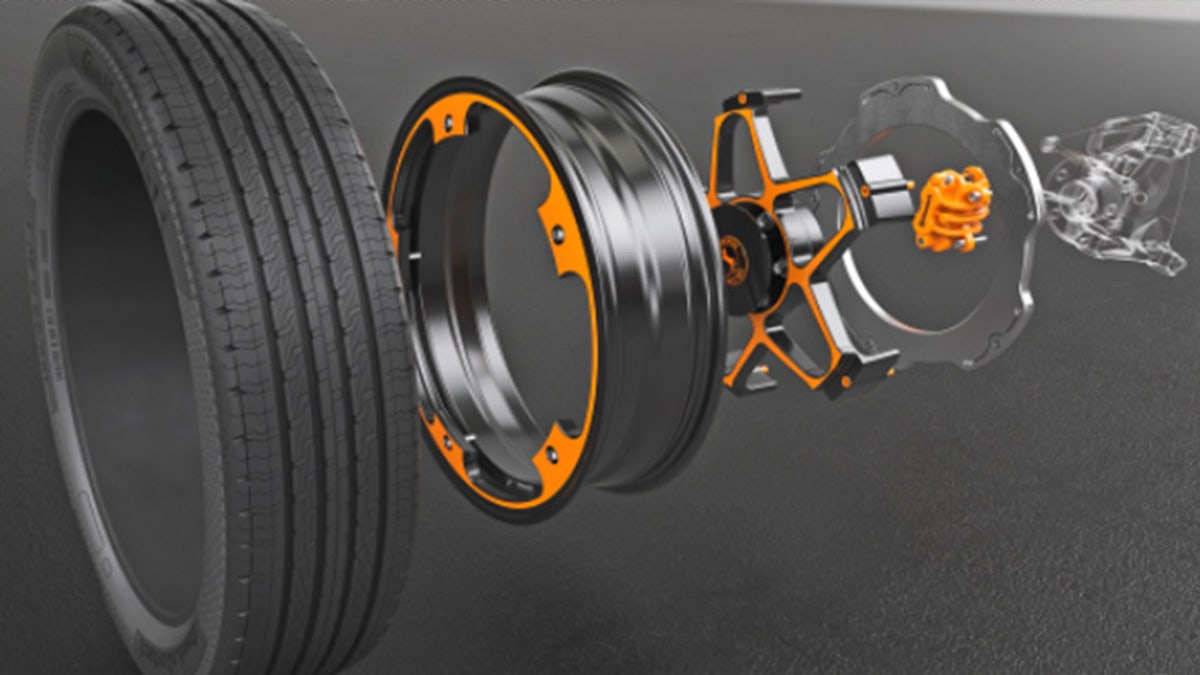
(Continental)
Continental has showcased a prototype for a way to boost the braking efficiency of electric cars. Dubbed the "New Wheel Concept," Continental engineered the system to help maximize regenerative braking and create an easier-to-maintain braking system.

The concept uses an inner carrier, brake rotor, and wheel made of aluminum, to keep weight down. The system uses an aluminum star and brake caliper that bolt to the axle hub, plus an outer rim and large brake rotor that bolt to the star. The rotor fits around the inside circumference of the rim, giving it a larger diameter to allow use of a smaller and lighter caliper that clamps from the inside out. Standard disc brakes use a disc mounted to the hub, not the rim, and a caliper that clamps on the outside of the brake disc.
The conceptual system is intended to harness as much energy as possible through regenerative braking, with less emphasis on the wheel brakes themselves, which are used much less in electric cars.
MORE AUTO NEWS FROM MOTOR AUTHORITY
Another major breakthrough in this concept are brake rotors that don't rust or otherwise corrode; rusty rotors often lead to variable brake performance. Continental's hardened aluminum construction also means the rotor isn't subject to wear, unlike today's cast-iron rotors. Aluminum happens to be a fantastic heat conductor as well, which means brake heat created is quickly dispersed.
More regenerative braking and better-behaved brakes are certainly a plus in our books. Increased range from more efficient regenerative braking systems could help electric cars expand their ranges in concert with continual improvements in battery technology.
We'll learn more about Continental's conceptual wheel and brake construction next month: the company plans to display the concept at the 2017 Frankfurt motor show.